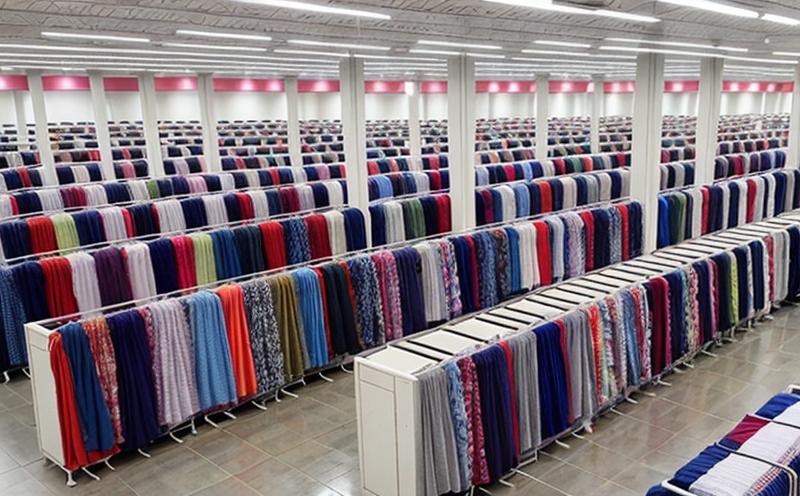ASTM D5035 Strip Tensile Strength Testing of Apparel for Export
The ASTM D5035 strip tensile strength test is a critical quality assurance and compliance measure that ensures the durability, safety, and reliability of textiles used in apparel destined for export. This test evaluates how much stress can be applied to an individual piece of fabric before it starts tearing along its length. The primary objective of this test is to ensure that the textile components meet international standards and are fit for use in various climates and conditions.
The test follows ASTM D5035, which specifies a method for determining the tensile properties of fabrics by measuring the load required to cause failure along a single strip. The specimen used during this test is typically cut from the fabric with a specific length and width, depending on the type of textile being tested.
This test is especially important in the government & trade facilitation sector because it ensures that exported textiles comply with international standards. Compliance officers and quality managers rely on such tests to ensure that products meet the requirements set by importing countries before they are shipped abroad. By ensuring compliance, this test not only helps avoid costly penalties but also enhances the reputation of the exporting company.
Understanding the significance of this test in the context of apparel for export is crucial. The test can help identify potential weaknesses or flaws in the design and manufacturing process early on, which can prevent costly recalls later. Additionally, it provides valuable insights into how different materials perform under stress, allowing manufacturers to make informed decisions about their product development.
The apparatus required for this test includes a tensile testing machine capable of applying precise loads to the specimen. The machine should be equipped with grips that can securely hold the fabric sample throughout the test without causing additional damage. Calibration and maintenance are crucial to ensure accurate results every time.
| Standard | Description |
|---|---|
| ASTM D5035-18 | This standard specifies the procedure for determining tensile properties of fabrics by means of a strip specimen. |
| ISO 13934-2:2007 | International Organization for Standardization method for testing tensile properties of fabrics. |
The acceptance criteria for the test are based on the standard. The sample must not fail before reaching a specified load, which is typically 10 Newtons (N) or more depending on the fabric type and end use. If the specimen fails below this threshold, it indicates that the fabric may not be suitable for its intended purpose.
- The test ensures compliance with international standards.
- It identifies potential weaknesses in textile design.
- The results can guide product development decisions.
- It enhances a company's reputation by ensuring quality and reliability.
Applied Standards
| Standard | Description |
|---|---|
| ASTM D5035-18 | This standard specifies the procedure for determining tensile properties of fabrics by means of a strip specimen. |
| EN 342:2016 | European Norm for testing the tensile strength and elongation at break of textile materials. |
| ISO 13934-2:2007 | International Organization for Standardization method for testing tensile properties of fabrics. |
The ASTM D5035 test is widely recognized and applied across various industries, especially in the textile sector. This standard ensures that the fabric specimens are tested under controlled conditions to provide consistent and reliable results. Compliance with these standards not only meets regulatory requirements but also enhances product quality and safety.
Why Choose This Test
- Ensures compliance with international standards set by importing countries.
- Identifies potential weaknesses in textile design early on.
- Guides product development decisions to enhance quality and reliability.
- Prevents costly recalls and returns, reducing overall costs for the company.
- Enhances a company's reputation by ensuring high-quality products are delivered reliably.
Use Cases and Application Examples
| Use Case | Example |
|---|---|
| Determining the durability of fabric for outdoor clothing. | Testing a jacket fabric to ensure it can withstand harsh weather conditions without tearing easily. |
| Evaluating the quality of materials used in high-stress areas like seams or zippers. | Assessing the strength of the material at the seam area of a pair of trousers to ensure it does not tear during wear. |
| Ensuring compliance with trade agreements and regulations. | Verifying that export garments meet the tensile strength requirements stipulated in free trade agreements. |





